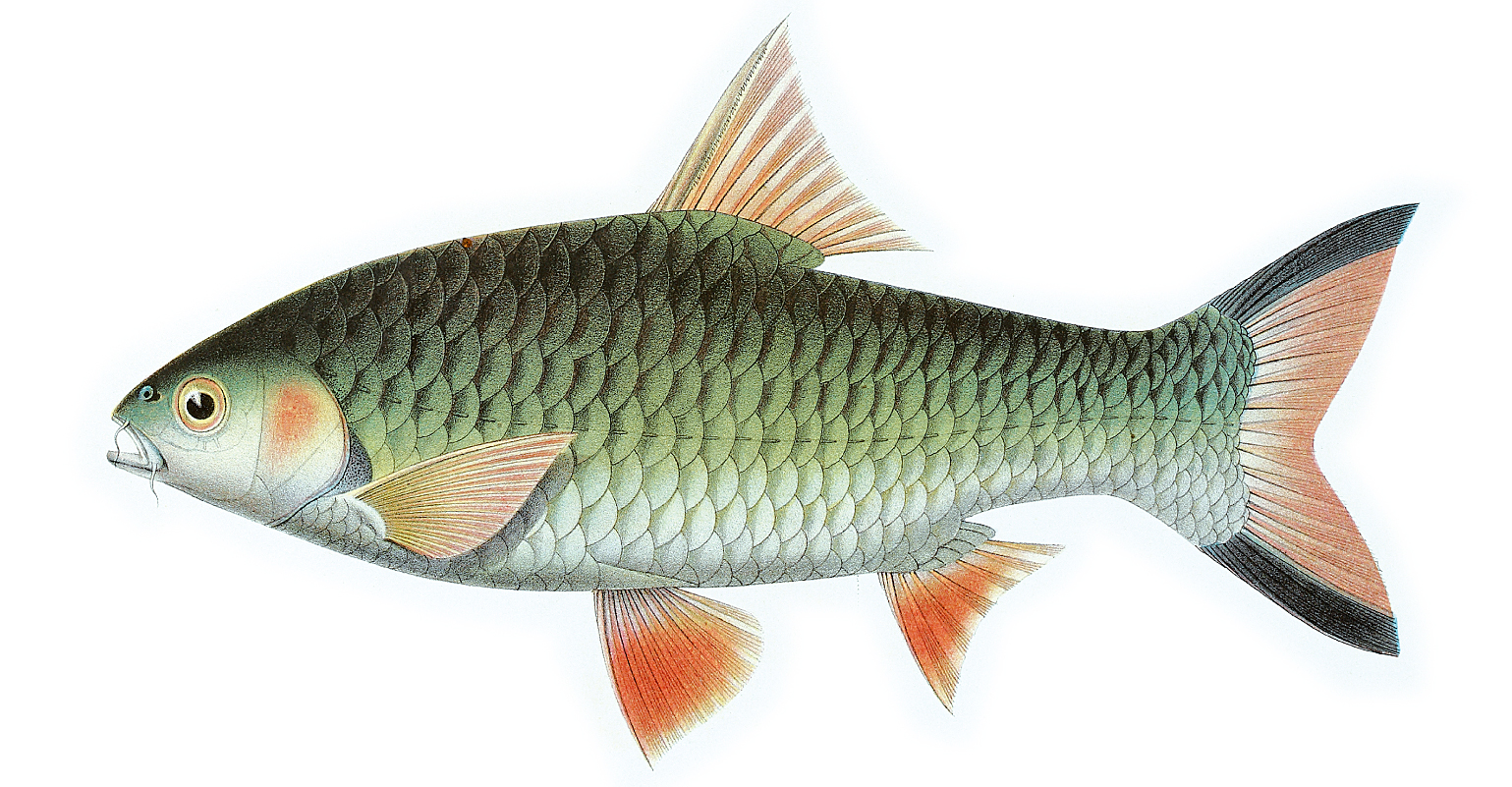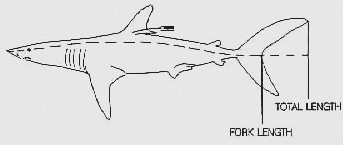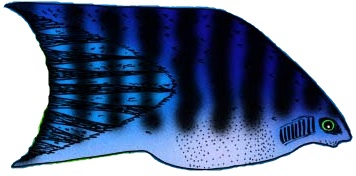|
Systomus Orphoides
''Systomus orphoides'', is a species of cyprinid fish native to Southeast Asia. It can reach a length of SL. It is closely related to, and maybe a synonym of, '' Systomus rubripinnis''. Sexual dimorphism Adult males develop a more intense colour pattern than females and develop nuptial tubercles Nuptial tubercles or breeding tubercles (also called pearl organs or nuptial efflorescence) are noticeable skin roughness or horny nodules that form on male fish during breeding. They are made of keratin, the same material as hair, hooves, and ... on the head in spawning condition. Adult females tend to grow a little larger, are heavier-bodied, and less colourful. References orphoides Fish of Southeast Asia Fish described in 1842 Taxa named by Achille Valenciennes {{Barbinae-stub ... [...More Info...] [...Related Items...] OR: [Wikipedia] [Google] [Baidu] |
Achille Valenciennes
Achille Valenciennes (9 August 1794 – 13 April 1865) was a French zoology, zoologist. Valenciennes was born in Paris, and studied under Georges Cuvier. His study of parasitic worms in humans made an important contribution to the study of parasitology. He also carried out diverse systematic classifications, linking fossil and current species. He worked with Cuvier on the 22-volume "''Histoire Naturelle des Poissons''" (Natural History of Fish) (1828–1848), carrying on alone after Cuvier died in 1832. In 1832, he succeeded Henri Marie Ducrotay de Blainville (1777–1850) as chair of ''Histoire naturelle des mollusques, des vers et des zoophytes'' at the Muséum national d'histoire naturelle. Early in his career, he was given the task of classifying animals described by Alexander von Humboldt (1769–1859) during his travels in the American tropics (1799 to 1803), and a lasting friendship was established between the two men. He is the binomial authority for many species of fish, ... [...More Info...] [...Related Items...] OR: [Wikipedia] [Google] [Baidu] |
Cyprinid
Cyprinidae is a Family (biology), family of freshwater fish commonly called the carp or minnow family, including the carps, the true minnows, and their relatives the barb (fish), barbs and barbel (fish), barbels, among others. Cyprinidae is the largest and most diverse fish family, and the largest vertebrate, vertebrate animal family overall, with about 1,780 species divided into 166 valid genus, genera. Cyprinids range from about in size to the giant barb (''Catlocarpio siamensis''). By genus and species count, the family makes up more than two-thirds of the ostariophysian order Cypriniformes. The family name is derived from the Greek word ( 'carp'). Biology and ecology Cyprinids are stomachless, or ''agastric'', fish with toothless jaws. Even so, food can be effectively chewed by the gill rakers of the specialized last gill bow. These pharyngeal teeth allow the fish to make chewing motions against a chewing plate formed by a Process (anatomy), bony process of the skull. The ... [...More Info...] [...Related Items...] OR: [Wikipedia] [Google] [Baidu] |
Southeast Asia
Southeast Asia is the geographical United Nations geoscheme for Asia#South-eastern Asia, southeastern region of Asia, consisting of the regions that are situated south of China, east of the Indian subcontinent, and northwest of the Mainland Australia, Australian mainland, which is part of Oceania. Southeast Asia is bordered to the north by East Asia, to the west by South Asia and the Bay of Bengal, to the east by Oceania and the Pacific Ocean, and to the south by Australia (continent), Australia and the Indian Ocean. Apart from the British Indian Ocean Territory and two out of Atolls of the Maldives, 26 atolls of the Maldives in South Asia, Maritime Southeast Asia is the only other subregion of Asia that lies partly within the Southern Hemisphere. Mainland Southeast Asia is entirely in the Northern Hemisphere. Timor-Leste and the southern portion of Indonesia are the parts of Southeast Asia that lie south of the equator. The region lies near the intersection of Plate tectonics, ... [...More Info...] [...Related Items...] OR: [Wikipedia] [Google] [Baidu] |
Fish Measurement
Fish measurement is the measuring of individual fish and various parts of their anatomies, for data used in many areas of ichthyology, including taxonomy and fishery biology. Overall length Standard length (SL) is the length of a fish measured from the tip of the snout to the posterior end of the last vertebra or to the posterior end of the midlateral portion of the hypural plate. This measurement excludes the length of the caudal (tail) fin. Total length (TL) is the length of a fish measured from the tip of the snout to the tip of the longer lobe of the caudal fin, usually measured with the lobes compressed along the midline. It is a straight-line measure, not measured over the curve of the body. Standard length measurements are used with Teleostei (most bony fish), while total length measurements are used with Myxini (hagfish), Petromyzontiformes ( lampreys) and usually Elasmobranchii (shark Sharks are a group of elasmobranch cartilaginous fish characterized by ... [...More Info...] [...Related Items...] OR: [Wikipedia] [Google] [Baidu] |
Nuptial Tubercles
Nuptial tubercles or breeding tubercles (also called pearl organs or nuptial efflorescence) are noticeable skin roughness or horny nodules that form on male fish during breeding. They are made of keratin, the same material as hair, hooves, and fingernails. Use and description These tubercles are dermal structures present in 15 families of fish belonging to 4 orders of Actinopterygii – Salmoniformes, Gonorhynchiformes, Cypriniformes and Perciformes are used in the courtship and reproduction process. They consist of partially or fully keratinised cells that form in certain regions, used to stimulate females during courtship. Their development is stimulated by hormones secreted by the pituitary and adrenal glands, and is induced shortly before the breeding season and discarded after. In some species, at least, there is a correlation between the level of androgens present in the endocrine system and the volume and complexity of tubercle growth. They normally form on the he ... [...More Info...] [...Related Items...] OR: [Wikipedia] [Google] [Baidu] |
Puntius Orphoides Bleeker
''Puntius'' is a genus of small freshwater fish in the family Cyprinidae native to South Asia and Mainland Southeast Asia, as well as Taiwan. Many species formerly placed in ''Puntius'' have been moved to other genera such as ''Barbodes'', '' Dawkinsia'', ''Desmopuntius'', ''Haludaria'', '' Oliotius'', ''Pethia'', '' Puntigrus'', '' Sahyadria'' and ''Systomus''.Kottelat, M. (2013)The fishes of the inland waters of southeast Asia: A catalogue and core bibliography of the fishes known to occur in freshwaters, mangroves and estuaries. ''Raffles Bulletin of Zoology, Suppl. No. 27: 1–663.''Pethiyagoda, R., Meegaskumbura, M. & Maduwage, K. (2012)A synopsis of the South Asian fishes referred to ''Puntius'' (Pisces: Cyprinidae).''Ichthyological Exploration of Freshwaters, 23 (1): 69–95.''Raghavan, R., Philip, S., Ali, A. & Dahanukar, N. (2013)''Sahyadria'', a new genus of barbs (Teleostei: Cyprinidae) from Western Ghats of India.''Journal of Threatened Taxa, 5 (15): 4932–4938.'' P ... [...More Info...] [...Related Items...] OR: [Wikipedia] [Google] [Baidu] |
Systomus
''Systomus'' is a genus of fish in the family Cyprinidae native to tropical Asia.Kottelat, M. (2013)The fishes of the inland waters of southeast Asia: A catalogue and core bibliography of the fishes known to occur in freshwaters, mangroves and estuaries. ''Raffles Bulletin of Zoology, Suppl. No. 27: 1–663.'' Species The recognized species in this genus are: * '' Systomus asoka'' ( Kottelat & Pethiyagoda, 1989) (Asoka barb) * '' Systomus binduchitra'' ( Hora, 1937) * '' Systomus chryseus'' Plamoottil, 2014 (Golden systomus) * '' Systomus compressiformis'' ( Cockerell, 1913) * '' Systomus diliciosus'' ( McClelland 1839) * '' Systomus gracilus'' Plamoottil & Maji, 2020 * '' Systomus immaculatus'' McClelland, 1839 * '' Systomus jacobusboehlkei'' ( Fowler, 1958) * '' Systomus laticeps'' Plamoottil, 2016 * '' Systomus martenstyni'' (Kottelat & Pethiyagoda, 1991) (Martenstyn's barb) * '' Systomus orphoides'' (Valenciennes, 1842) * '' Systomus pleurotaenia'' ( Bleeker, 1863) (Side-st ... [...More Info...] [...Related Items...] OR: [Wikipedia] [Google] [Baidu] |
Fish Of Southeast Asia
A fish (: fish or fishes) is an aquatic, anamniotic, gill-bearing vertebrate animal with swimming fins and a hard skull, but lacking limbs with digits. Fish can be grouped into the more basal jawless fish and the more common jawed fish, the latter including all living cartilaginous and bony fish, as well as the extinct placoderms and acanthodians. In a break to the long tradition of grouping all fish into a single class (Pisces), modern phylogenetics views fish as a paraphyletic group. Most fish are cold-blooded, their body temperature varying with the surrounding water, though some large active swimmers like white shark and tuna can hold a higher core temperature. Many fish can communicate acoustically with each other, such as during courtship displays. The study of fish is known as ichthyology. The earliest fish appeared during the Cambrian as small filter feeders; they continued to evolve through the Paleozoic, diversifying into many forms. The earliest fish w ... [...More Info...] [...Related Items...] OR: [Wikipedia] [Google] [Baidu] |
Fish Described In 1842
A fish (: fish or fishes) is an aquatic, anamniotic, gill-bearing vertebrate animal with swimming fins and a hard skull, but lacking limbs with digits. Fish can be grouped into the more basal jawless fish and the more common jawed fish, the latter including all living cartilaginous and bony fish, as well as the extinct placoderms and acanthodians. In a break to the long tradition of grouping all fish into a single class (Pisces), modern phylogenetics views fish as a paraphyletic group. Most fish are cold-blooded, their body temperature varying with the surrounding water, though some large active swimmers like white shark and tuna can hold a higher core temperature. Many fish can communicate acoustically with each other, such as during courtship displays. The study of fish is known as ichthyology. The earliest fish appeared during the Cambrian as small filter feeders; they continued to evolve through the Paleozoic, diversifying into many forms. The earliest fish wi ... [...More Info...] [...Related Items...] OR: [Wikipedia] [Google] [Baidu] |






